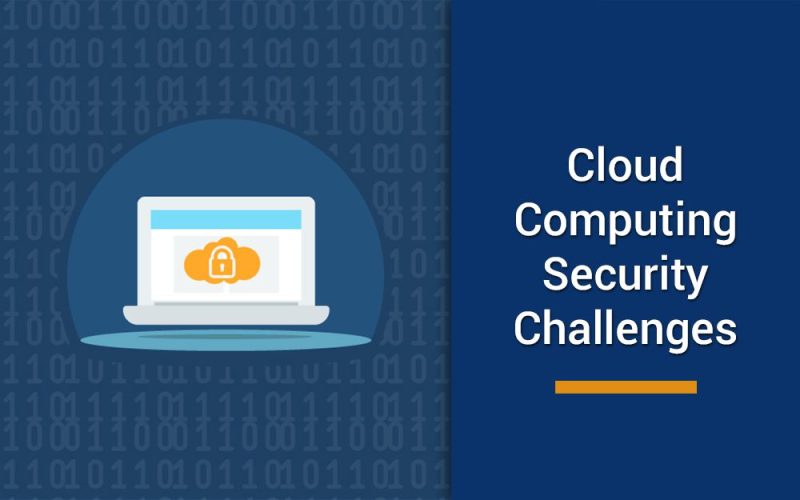What Are the Top 5 Cloud Computing Security Challenges?

Introduction
Cloud computing is all the range, but it can also be a security risk. The best way to address these challenges is by using shared responsibility, effective policies and procedures, and a unified view of all cloud workloads.
Cyber-attacks
Cyber-attacks are becoming more sophisticated and targeted, making it harder for organizations to protect their data.
Cyber-attacks can be launched by anyone, from anywhere in the world; they don’t have to come from a specific location or computer network. This makes detection difficult because attackers may use different software tools on different computers (like malware). In addition, cybercriminals are increasingly using fake websites and social media accounts to trick people into giving away their personal information such as credit card numbers or passwords—which makes security systems useless!
Cybercriminals can also use stolen credit card numbers for purchases that look legitimate but aren’t actually yours–they’ll even take out loans in your name, so they won’t get caught!
DDoS attacks
A DoS or Distributed Denial of Service attack is a targeted attempt to make a service unavailable by overloading it with useless traffic. This can be done through an Internet protocol (IP) flood, which floods the target with packets so much that none can be processed, or a SYN flood, in which attackers send many SYN requests for TCP connections to the server’s port 3306 on the same IP address.
The most common way for companies to experience DDoS attacks is through their network infrastructure—that is, their servers and routers. If you’re feeling nervous about this particular threat and don’t know how best to protect yourself from it, there are some things you can do:
Insider threats
Insider threats are a major security concern for cloud security services providers. The threat of insider attacks is growing, as hackers have learned how to target employees and ex-employees for data theft.
Insider threats can come from the cloud provider itself or from an employee who has access to sensitive information (e.g., passwords). This type of insider threat can be malicious or accidental; it could be someone with malicious intent who wants to steal your company’s confidential data; or it could be someone who makes a simple mistake while using their work laptop at home, copying sensitive files onto another machine without realizing what they’ve done until later on when they realize that those same files are now missing from their original location on Google Drive/Dropbox etcetera…
Weak identity, credential, and access management (ICAM)
- Weak identity, credential, and access management (ICAM)
- Cloud providers are responsible for managing user accounts on their own systems. However, they also rely on customers to monitor their own security policies and enforce them within their cloud environments. If there are gaps in this process, it can lead to a breach of sensitive data or compromise of business operations.
- ICAM is one of the most important aspects of security because it’s an integral part of any organization’s overall strategy for protecting its assets from external threats—including hackers who would like nothing more than to steal your valuable information or disrupt your business operations with malware attacks or distributed denial-of-service (DDoS) attacks against its servers.
Advanced persistent threats (APTs)
Advanced persistent threats (APTs) are a form of cyber-attack that is difficult to detect and can cause serious damage. APTs use multiple methods to infiltrate a network, including phishing, viruses, and other tools. They often target specific individuals or organizations with an intention to extract confidential information for personal gain or for political purposes.
APTs are difficult to detect because they use legitimate tools and techniques as part of their attack strategy; thus, it’s hard for security professionals who don’t know what they’re looking for—or how best to respond—to identify them.
The best ways to address these security challenges are using shared responsibility, effective policies and procedures, and a unified view of all cloud workloads.
The best ways to address these security challenges are using shared responsibility, effective policies and procedures, and a unified view of all cloud workloads.
- Shared Responsibility: All organizations should be mindful of the impact their decisions have on other organizations that may not have the same level of security expertise or budget as they do. This includes both internal partners (e.g., suppliers) as well as external partners (e.g., customers).
- Effective Policies and Procedures: The use of strong policies and procedures can help ensure that you have visibility into what your organization is doing with data in the cloud or on-premises—and where it might be going wrong if left unchecked by your staff members’ actions or lack thereof! The key here is being proactive about monitoring activity across all systems so that any suspicious activity can be identified quickly before it becomes an issue.”
Conclusion
The cloud has transformed IT. We’ve seen how it can empower an organization to innovate, transform, and grow. But as with any new technology, security concerns have emerged as well. It’s important for your organization to understand challenges ahead and address them effectively now so that you can continue to embrace the benefits of cloud computing in the future! To Secure your Cloud Servers get in touch with TI Infotech
